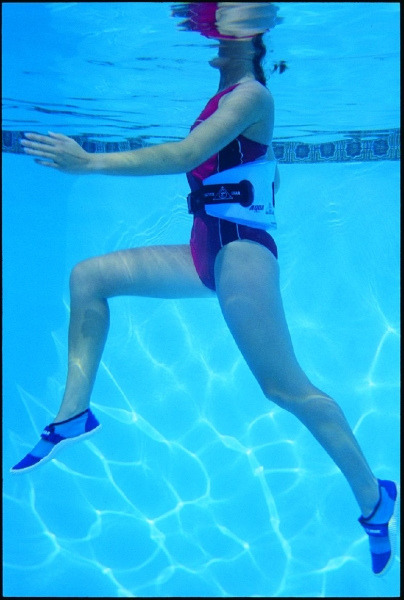February Newsletter

Sports Specific Screening Tests – Correction and Strengthening Exercises – Blading – Dry Needling – Joint Mobilisation & Taping – Massage plus more …
Back Pain
For sufferers of back pain, finding a comfortable position at night can be difficult. Ideally, the natural curves of the spine should be maintained and supported throughout the night. The correct mattress will support your lower back without making you feel as though you have been sleeping on concrete all night. A mattress that is too soft might feel comfortable to begin with, but over time will let you sink too much, meaning the curve of the lower spine will be lost. Waking up with a stiff spine could be a sign that you are using the wrong mattress.
For many people, sleeping on their side keeps their spine in a more natural alignment than on their back. If you sleep on your back, placing a pillow under your knees can help to maintain your lumbar spinal curve throughout the night.
Neck Pain
While you may be attached to your pillow, it could be the cause of unnecessary neck pain for you. The neck is often the most vulnerable part of our body when our sleeping setup is not ideal. Side sleepers may let their neck fall excessively to the side with a pillow that is too low or have their neck elevated too much by having their pillows too high. The importance of having a supportive pillow that supports your neck while sleeping cannot be overstated. If you find yourself putting your arm under your pillow while you sleep, it is likely that your pillow is too low.
Having your shoulder in this position overnight can put unnecessary stress on the structures in the shoulder joint and should be avoided if possible. Sleeping on your stomach with your head turned to the side can be the cause of many issues and if this is your preferred sleeping position, it could be worth chatting to your physiotherapist about strategies improve your sleeping posture.
Hip Pain
Side sleepers often spend their nights with one leg crossed over their body. This can place extra pressure on the structures on the side of the hip, such as tendons and bursa and can impact the health of these tissues as compression can reduce the blood flow to the area. If the mattress is too firm then the hip on the underside of the body may also be compressed under your bodyweight.
Placing a pillow under your knee while sleeping on your side can help to maintain a neutral alignment of your hip. This can also help to keep your lower back in a more neutral position during the night.
SPEAK TO A PAIN SLAYER FOR MORE ADVICE ON HOW TO IMPROVE YOUR SLEEPING POSTURE AND TO FIND OUT IF YOUR SLEEPING SETUP IS RIGHT FOR YOU.
Myth #1 – Discs can ‘slip’ out of place
Sitting between the vertebrae of the spine are soft discs that provide flexibility and shock absorption to the spine. In the past, many health professionals including doctors and physiotherapists told patients that these discs had
‘slipped’ as a way of explaining their pain to them.
While this was helpful to some extent, it is not entirely accurate, as these discs are actually very secure and rarely, if ever ‘slip’ out of place. Discs may bulge slightly or in some cases tear, however more often than not these injuries will heal without any permanent damage and exist in many people without causing any pain at all. Thinking that a part of your spine has permanently ‘slipped’ out of place can cause you to move differently, which can create more pain and dysfunction in itself.
Myth #2 – If you have low back pain, you should stay in bed
When back pain strikes, our natural instinct is to rest, avoid movement and wait for the pain to pass. However, studies have shown that being active and performing targeted and gentle exercises can help improve low back pain. In fact, our impulse to stop moving and protect our spines can actually cause abnormal movement patterns and stress, leading to ongoing pain after the original injury has healed. If you are unsure of what kind of exercises you should be doing, your physiotherapist can help guide you with a targeted exercise program.
Myth #3 – Severe pain means severe damage
Pain that is severe, strikes suddenly and without warning can be a very scary experience. If this happens to you, you could be forgiven for assuming you must have sustained a very serious injury. The fact is, however, that the spine, being surrounded by nerves is a particularly sensitive area of the body and pain in this
area can be very strong without significant damage.
A small ligament sprain or muscle tear can actually cause a large amount of pain and it is common for intense symptoms to settle down quickly, even disappearing within a few days. In many cases, symptoms that last for longer than 2-3 weeks are caused by changes to your movement patterns in response to this pain and not the original injury itself.
Physio Core, Strength so be quick to secure your spot ! & Stability Class
6 WEEK BLOCK $270 | Health fund rebatable under group consultation item number #560. Next block starting Wed 6th & Thurs 7th March. Spaces are limited to 6 per class so be quick to secure your spot!

66FIT AQUA FLOTATION BELT
Ideal for anyone requiring rehabilitation treatment in a hydrotherapy or swimming pool. The 66Fit Aqua Belt is designed for non-weight bearing aqua
based exercises.
It is designed to help reduce stress and impact on the joint and provides full lumbar support. It is comfortable to wear and easily adjustable. We have the aqua belts in stock now at Graceville Physiotherapy. $40
